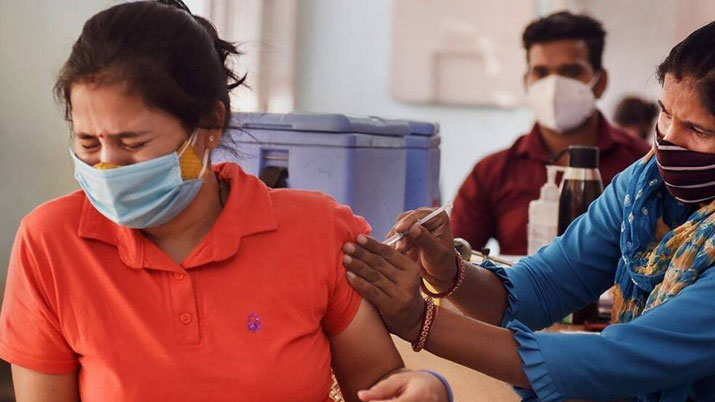In the past 24 hours, India recorded 29,689 new cases of the novel coronavirus along with 415 deaths, the daily caseload is less than 30,000 after 132 days. Kerala and Maharashtra reported 11,586 new cases and 4,877 infections respectively. According to health ministry sources, Kerala is not focusing enough on containment and thus reporting 50 per cent of new Covid-19 cases. Maharashtra is also reported the same 50 per cent of fresh cases. The Covid-19 fatalities are low in these states because of their good health infrastructure and are focused more on mitigation process of treating cases than containment.
The active cases, currently at 3,98,100, dropped below 4 lakh for the first time since March 24. As of Monday, there were 3.98 lakh active cases in the country, of which 1.37 lakh infections are from Kerala.
On the otherhand, the country might miss its vaccination target of 13.5 crore doses for July if it continues to vaccinate at the current pace. Till Sunday, 9.94 crore doses of vaccines had been administered this month, at an average of about 38.26 lakh doses per day. The total number of vaccine doses administered so far has reached 44.19 crore under the nationwide vaccination drive.
More than 2.28 crore Covid-19 vaccine doses are still available with states, Union Territories and private hospitals for inoculation, the Union health ministry said on Tuesday.
Addressing this concern, Lav Aggarwal, Joint Secretary, Union Health Ministry said, “There has been a consistent decline in the weekly average in the Covid-19 cases. But if we compare the rate of decline in cases, from earlier to now, its decrease remains the area of concern. We are in talks with states in this regard.”
The country’s capital has almost completely unlocked the capital following the Covid-19 guidelines and restrictions of course with terms and conditions. Only schools, colleges, coaching institutes and religious and social gatherings remain curtailed.
However, the threat of a possible third wave is still lurking. In view of this, the Delhi government is making preparations to handle the same. Taking lessons from the devastating second wave the Delhi government is focused on ensuring supply of those medical facilities that were in dire shortage in April and May.
The Delhi government’s action plan includes setting up of a state-level task force and pediatric task force, increasing the number of health workers and oxygen plants, arranging medicines and rapidly getting the population vaccinated
The Delhi government is preparing to set up a total of 44 oxygen plants in Delhi.
As of the month of June, 27 oxygen plants had been installed by the government. By the end of July, 17 more oxygen plants are expected to have been set up. In Delhi, the central government has set up six oxygen plant centres and is expected to receive seven more.
Three oxygen storage tanks have been built with a capacity of 57 metric tonnes per tank. For the uninterrupted supply of oxygen, 18 oxygen tankers will be brought from Bangkok. Two cryogenic bottling plants with 12 metric tonnes capacity will be operational by July 31.
Also, two special task forces have been set up in Delhi to handle the possible third wave of Covid-19.
The first one is the pediatric special task force which has been constituted for the management of Covid-19 in children. It has eight members and will make preparations keeping in mind the possible effect of the third wave on children.
The second one is a state-level expert committee which has been constituted to reduce the impact of the possible third wave and for its management. This committee of 13 officers will prepare an action plan to increase Delhi’s health infrastructure on the basis of the current health infrastructure, supply of medicines and oxygen and future requirements.
Also, a graded response action plan (GRAP) has been prepared for Delhi to handle the possible third wave. As per this action plan, different Covid circumstances will be dealt with in different ways.
There are four types of alerts under Delhi’s GRAP;
Level-1 (Yellow) – This will be applicable when the positivity rate is more than 0.5 per cent for two consecutive days, 1,500 new cases have emerged in one week or 500 oxygen beds have been occupied in seven days.
Level-2 (Amber) – This will be applicable when the positivity rate is more than 1 per cent for two consecutive days, 3,500 new cases have emerged in one week or 700 oxygen beds have been occupied in seven days.
Level-3 (Orange) – This will be applicable when the positivity rate is more than 2 per cent for two consecutive days, 9,000 new cases have emerged in one week or 1,000 oxygen beds have been occupied in seven days.
Level-4 (Red) – This will be applicable when the positivity rate is more than 5 per cent for two consecutive days, more than 16,000 new cases have emerged in one week or 3,000 oxygen beds have been occupied in seven days.


